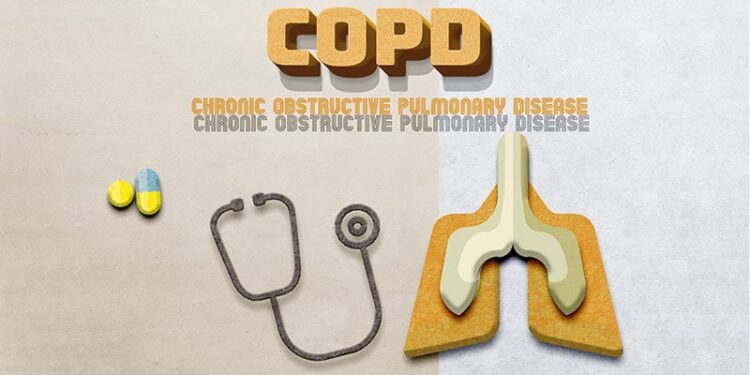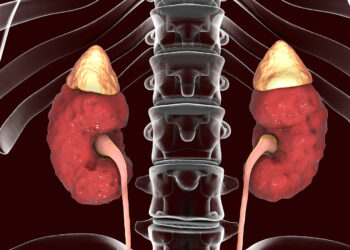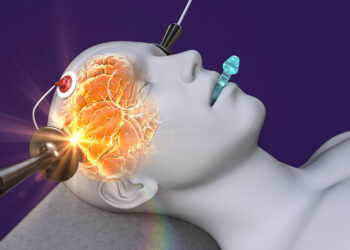SAN FRANCISCO — A new diagnostic schema incorporating chest CT and respiratory symptoms into the diagnosis of chronic obstructive pulmonary disease (COPD) can help to better identify patients at risk for poor respiratory outcomes and rule out those with airflow obstruction who have neither respiratory symptoms nor evidence of structural lung disease.
The recommendation for a new diagnostic paradigm, based on a cohort study incorporating data from two large longitudinal studies, was presented at the American Thoracic Society (ATS) 2025 International Conference and published online simultaneously in JAMA.
“We have developed a new, multidimensional diagnostic schema for COPD that incorporates spirometry, symptoms, and imaging and goes beyond how we diagnose COPD now. It results in an additional number of individuals with high risk for all-cause mortality, respiratory-caused mortality, exacerbation, and lung function decline but also, importantly, excludes some people with airflow obstruction who do not have poor outcomes,” said lead author Surya P. Bhatt, MD, MSPH, from the University of Alabama at Birmingham, in an oral abstract session at ATS 2025.
“Using the new COPD diagnostic schema, compared with individuals classified as not having COPD, those with a new diagnosis of COPD had greater all-cause and respiratory-specific mortality, more frequent exacerbations, and faster FEV1 [forced expiratory volume in 1 second] decline,” wrote Bhatt and colleagues in the Genetic Epidemiology of COPD (COPDGene) 2025 Diagnosis Working Group and Canadian Cohort Obstructive Lung Disease (CanCOLD) investigators.
“This study marks a pivotal point in the understanding and management of COPD. By introducing a broader, multicriteria framework, it moves the field beyond traditional diagnostic limitations and sets the stage for more individualized and inclusive COPD patient care,” wrote Francesca Polverino, MD, PhD, from Baylor College of Medicine in Houston, in an editorial accompanying the study in JAMA.
Rewriting the Diagnostic Script
Current recommendations for diagnosis of COPD in patients with respiratory symptoms require detection of airflow obstruction on spirometry following a bronchodilator and an FEV1/forced vital capacity (FVC) ratio < 0.70 or below the lower limit of normal.
Yet as the study authors pointed out, “spirometry does not capture all aspects of this complex heterogeneous disease, and there is growing consensus in the respiratory community that a COPD diagnosis should not be based on spirometry alone.”
To see whether adding CT imaging abnormalities and respiratory symptoms to the COPD diagnostic toolbox could improve the identification of patients at risk for poor outcomes, the investigators conducted a cohort study combining data from 9416 adults in the COPDGene cohort and 1341 participants in the CanCold cohort to derive and evaluate the new schema and test associations with clinical outcomes.
The proposed system includes the major criterion of the presence of airflow obstruction based on a postbronchodilator FEV1/FVC ratio < 0.70, plus either 1 of 5 minor diagnostic criteria (emphysema or bronchial wall thickening on CT, dyspnea, poor respiratory quality of life, and chronic bronchitis) or, for patients who have respiratory symptoms that could potentially be due to other causes, at least 3 of 5 minor criteria, with the obligatory inclusion of emphysema or bronchial wall thickening.
Among 5250 patients without airflow obstruction in the COPDGene cohort, 811 were reclassified according to the new system as having COPD by minor diagnostic category. Conversely, of 4166 with airflow obstruction, the new system determined that 282 patients did not have COPD.
Compared with patients classified under the new system as not having COPD, those patients who were reclassified with a new COPD diagnosis had significantly higher risks for all-cause mortality (adjusted hazard ratio [aHR], 1.98; P < .001), respiratory-specific mortality (aHR, 3.58; P = .003), more exacerbations (adjusted incidence rate ratio, 2.09; P < .001), and more rapid decline in FEV1 (adjusted β = −7.7 mL; P = .006).
Among patients who were deemed to have airflow obstruction on spirometry, those who were reclassified under the new system as not having COPD had clinical outcomes similar to those of patients without airflow obstruction.
When the new criteria were applied to 1341 adults in the CanCOLD cohort, the investigators found that those patients who were newly classified as having COPD had a twofold risk for more frequent exacerbations (adjusted incidence rate ratio, 2.09; P < .001).
‘Groundbreaking’
“What truly sets this reclassification apart is its groundbreaking assertion that airflow obstruction is no longer a requirement for a COPD diagnosis,” Polverino wrote in her editorial.
“Likewise, its presence alone does not automatically confirm the diagnosis. This shift acknowledges that many individuals have classic COPD-related pathology and symptoms without meeting the old spirometry thresholds. In cases in which patients present with comorbidities that could plausibly explain symptoms better than COPD itself, the model suggests that at least 2 of the 3 minor criteria should be imaging-based to support a COPD diagnosis,” she added.
The study was funded by the National Institutes of Health (NIH).
Bhatt reported receiving grants from NIH during the conduct of the study and consulting fees from multiple entities, including Medscape Medical News.
Polverino disclosed serving on multiple advisory boards, as a spokesperson for the American Lung Association, grants from Sanofi and Regeneron, and serving as a section editor for the European Respiratory Journal.
Neil Osterweil, an award-winning medical journalist, is a long-standing and frequent contributor to Medscape Medical News.
Source link : https://www.medscape.com/viewarticle/copd-diagnosis-reboot-identifies-more-risk-individuals-2025a1000cpi?src=rss
Author :
Publish date : 2025-05-20 13:20:00
Copyright for syndicated content belongs to the linked Source.












